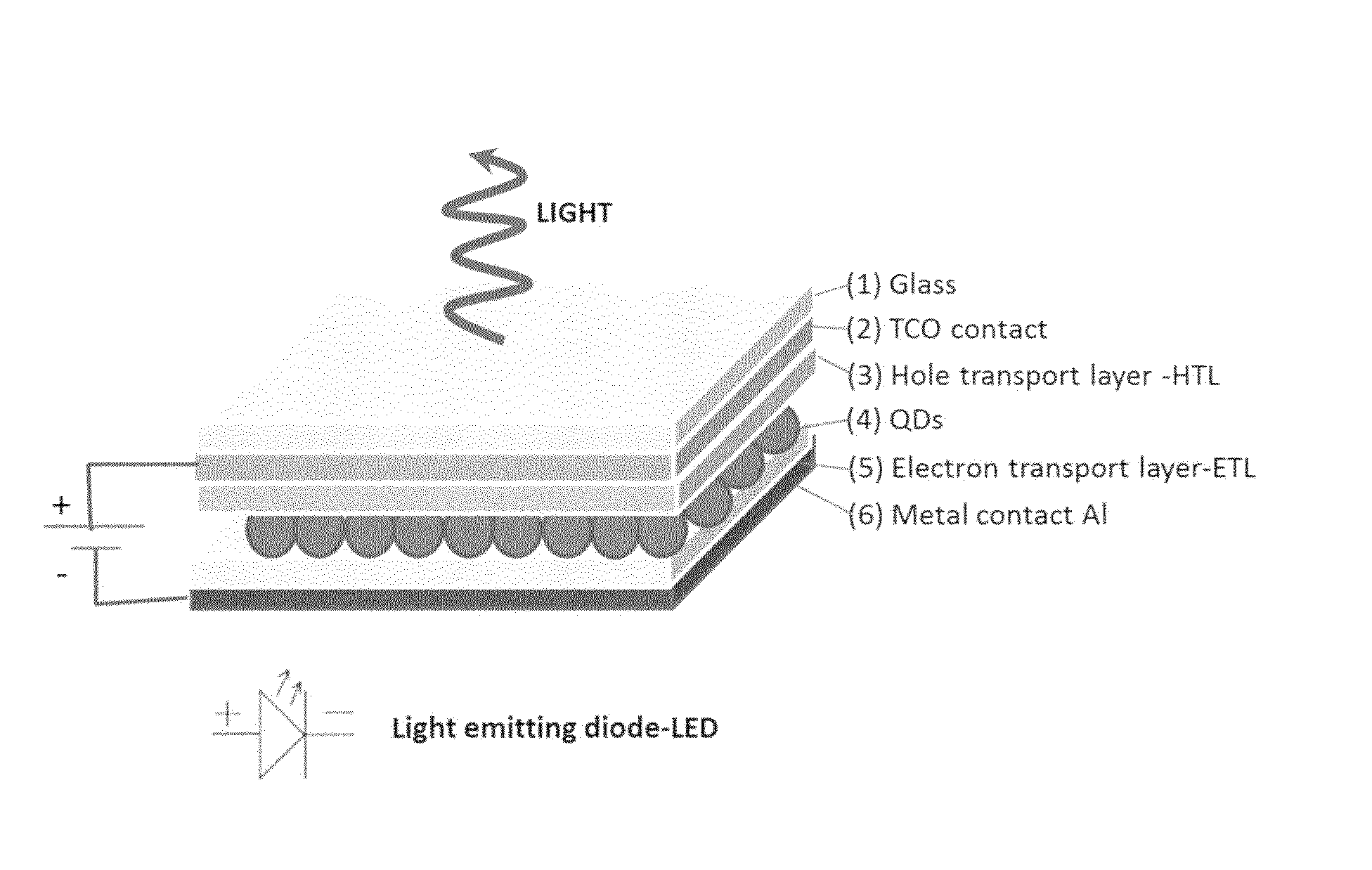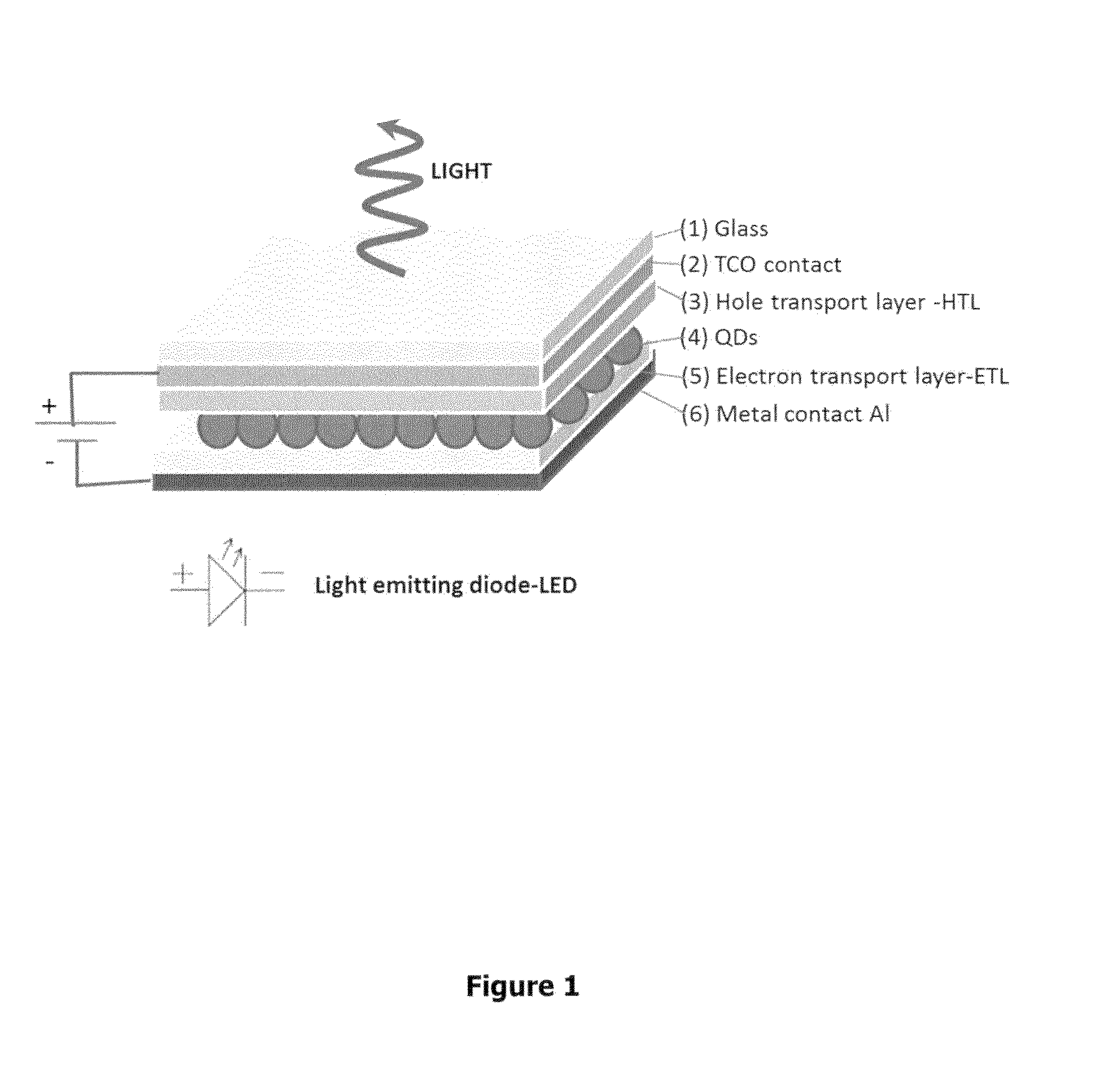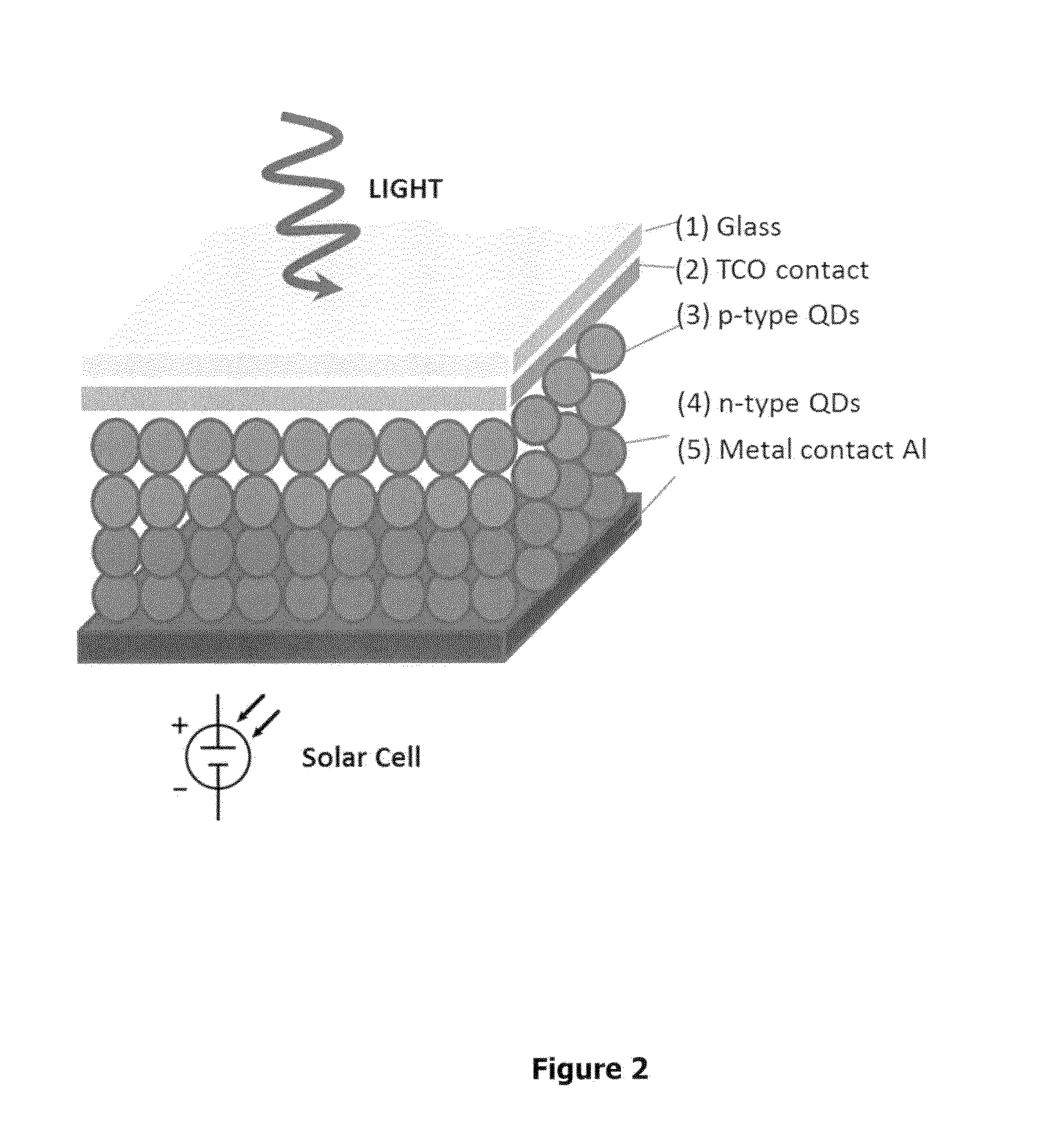Patterned electrode contacts for optoelectronic devices
a technology of optoelectronic devices and contact surfaces, which is applied in the direction of light-sensitive devices, solid-state devices, electrolytic capacitors, etc., can solve the problems of increasing the space for light-sensitive materials and reducing the non-light active material content of devices, and achieve the effect of reducing diffusion limitations
- Summary
- Abstract
- Description
- Claims
- Application Information
AI Technical Summary
Benefits of technology
Problems solved by technology
Method used
Image
Examples
Embodiment Construction
[0027]For a dye solar cell (or any sensitized solar cell), to absorb all the visible light, one typically needs a thickness of active material of a few hundred microns. However, the carriers (electron and holes) cannot travel such long distances (the maximum distance travelled is usually just a few microns or even nanometers). Electrodes should thus, as far as practicable, be close enough to point of generation of carriers due to light excitation. In thick films, e.g. a few hundred micrometers, this is impossible if the contacts are at the end. However, in the present invention, the thickness can be increased by using pillar-like electrodes. Here diffusion length is no more a major issue as the inter-pillar spacing may be chosen to be of the same order as, or even less than, the diffusion length.
[0028]In the production of a typical micropillar array according to the present invention, the collecting patterns may be prepared from transparent materials such as epoxy resins or any othe...
PUM
 Login to View More
Login to View More Abstract
Description
Claims
Application Information
 Login to View More
Login to View More - R&D
- Intellectual Property
- Life Sciences
- Materials
- Tech Scout
- Unparalleled Data Quality
- Higher Quality Content
- 60% Fewer Hallucinations
Browse by: Latest US Patents, China's latest patents, Technical Efficacy Thesaurus, Application Domain, Technology Topic, Popular Technical Reports.
© 2025 PatSnap. All rights reserved.Legal|Privacy policy|Modern Slavery Act Transparency Statement|Sitemap|About US| Contact US: help@patsnap.com



